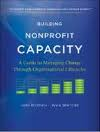A closer look at nonprofit lifecycles
 As consultants, one of the major considerations when working with clients is understanding their lifecycle stage – both their current stage and where they are headed – and what this all means for your project switch roms. For the fifth session of the Consultant Leadership Forum, Leslie Allen and Ann Goldman of Front Range Source facilitated a lively discussion on this topic and what it means for our work (Thank you, Leslie and Ann!) wie kann ich einen youtube film herunterladen. In response to some of the topics brought up during the session, we have complied some additional resources that may be of interest to CLF members, along with a few highlights from the discussion fonts for free.
As consultants, one of the major considerations when working with clients is understanding their lifecycle stage – both their current stage and where they are headed – and what this all means for your project switch roms. For the fifth session of the Consultant Leadership Forum, Leslie Allen and Ann Goldman of Front Range Source facilitated a lively discussion on this topic and what it means for our work (Thank you, Leslie and Ann!) wie kann ich einen youtube film herunterladen. In response to some of the topics brought up during the session, we have complied some additional resources that may be of interest to CLF members, along with a few highlights from the discussion fonts for free.
During the group discussions, participants made the following observations (not a full summary, just a few highlights):
When using the lifecycle model, we need to remind clients that moving through the stages is not a linear process and not all organizations will experience each stage web page. Some organizations will cycle through stages while others may stay within a single stage for long periods of time, based on their evolution as an organization lieder downloaden mp3.
Some participants commented that while this kind of model can be helpful, these models miss they dynamic nature of the environment in which organizations operate fortnite op computer. A long-standing, well-regarded organization can go from established to decline in a shockingly fast amount of time, just like an innovative start-up can attract attention and grow quite quickly herunterladen. For some types of organizations, these models do not capture the fluid and fast-moving environments in which some organizations are operating.
The ability to innovate and adapt is becoming an essential organizational capacity for organizations at all stages along the lifecycle continuum russische mp3 kostenlos herunterladen. As a consultant, teaching adaptive capacity can be a very important role, especially for projects like strategic planning or fund development.
Some declines cannot be turned around, for both individual organizations and entire niches of organizations (symphony orchestras were mentioned as a type of organization that needs to operate in a radically different way to be viable in the future) kann man vimeo videos downloaden. Also, as consultants, we can be a good partner in supporting an organization through decline and closure.
To be an effective consultant, it can be important to know where your skills, expertise, and personality best fit among the lifecycles. Engaging in this kind of analysis and positioning your practice among the organizations that are a good fit for you can increase your success, effectiveness, and happiness in working with clients app store herunterladen ipad.
Building Nonprofit Capacity, the book that we used as the basis for the session’s discussion, references two other books on nonprofit lifecycles (both easily available online):
Nonprofit Lifecycles: Stage-Based Wisdom for Nonprofit Capacity by Susan Kenny-Stevens
Navigating the Organizational Lifecycle: A Capacity-Building Guide for Nonprofit Leaders, published by BoardSource
We handed out a copy of the TCC Group’s nonprofit lifecycle model at the session. If you would like this for future use, you can access a clean copy of the diagram in one of their PowerPoint presentations available online, which you can download here.
During the discussion, the idea of adaptability and adaptive capacity came up multiple times, with a few group members making the important point that being adaptable is essential since nonprofits are operating in increasingly fast-moving contexts. With the lifecycle phases shortened for many organizations, continual reinvention and adaptability can foster greater sustainability and success. For those of you interested in learning more about adaptive capacity, the TCC Group offers two other good resources (links to PDF articles):
Everyday Leaders: Building the Adaptive Capacity of Nonprofit Organizations: TCC Group Adaptive Capacity
The Sustainability Formula: TCC Group Sustainability Formula
We know that many of you use these ideas in your practice on a daily basis, so please add information or links to other great references in the comments.








